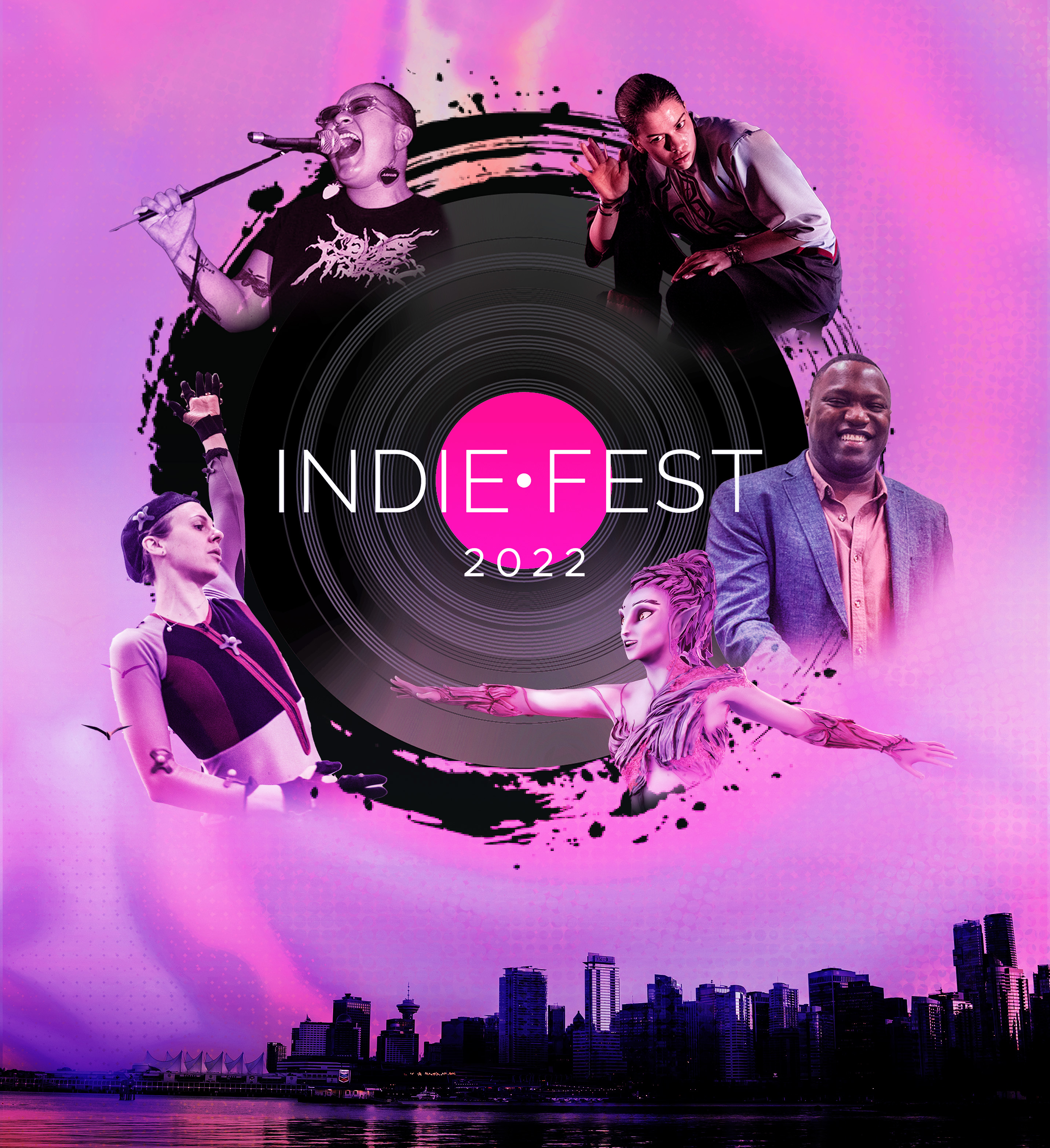
The Vancouver Arts Review received an invitation to review re:Naissance Opera’s 3rd annual Indiefest. The program brochure mentioned a lineup of 14 events happening over 11 days from November 16 to 27. We attended a few events and were blown away by the wonderful people and outstanding talent at Indiefest.
Festival co-producers Stephanie Wong, Debi Wong and Kristina Lao aspired to create genre-bending artistic experiences that boldly address social justice issues. It was evident that a lot of thought had gone into curating a multi-faceted arts festival with a daring vision to redefine the landscape of fine arts in Canada by centering the experiences and stories of First Nations, BIPOC and queer communities. The festival provided a platform for many emerging artists and explored creative collaborations between diverse art forms ranging from opera and theater to drag, burlesque and extended reality. Indiefest 2022 was funded and supported by City of Vancouver, Canada Council for the Arts, Canadian Heritage/CAPF, BC Arts Council, Vancouver Foundation, Vancouver Civic Theatres, Vancouver Opera, Creative BC, BC Multiculturalism, BC Gaming, Reallusion, Movella and Association for Opera Canada.
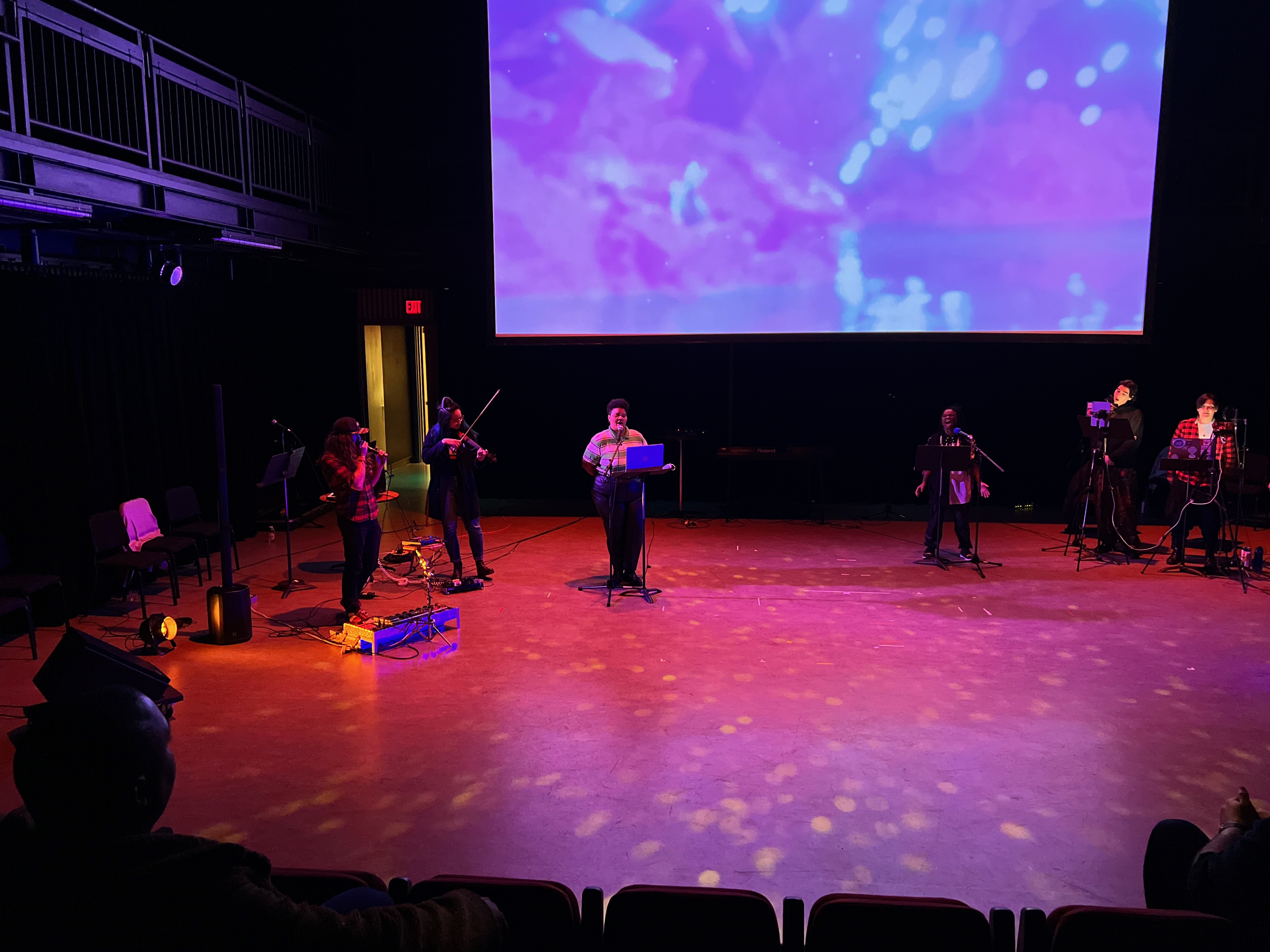
Inferno: A Hip-hop Opera
The inaugural evening of Indiefest 2022 featured a hip-hop opera developed by their artists-in-residence – the very talented couple Omari Newton and Amy Lee Lavoie. The project was in its developmental stages and the audience was presented a glimpse into the nascent art form by blending the contrasting genres of hip-hop and traditional opera. The piece was a reinterpretation of Dante’s Inferno with a feminist, anti-capitalist and anti-racial plot.
The opera was presented in a fashion that pushed the boundaries of traditional opera in an awe-inspiring manner. The dialogue and verses alternated between characters improvising in hip-hop style and traditional operatic story-telling. The musical dialogue was complemented with beatboxing, violin, piano and background vocals. “Freestyling and improvisation lie at the heart of hip-hop and rap traditions,” said Omari Newton. This ethos was incorporated into operatic storytelling. The audience was spellbound when it was announced that the crew came together just three days before the show and together they had loosely arranged the musical chords. Without elaborate composition, they improvised with incredible coherence and tonal clarity. The exquisite talent of the troupe generated many giggles, appreciative gasps and loud applause from a stunned audience – everyone seemed to realize that they had experienced something unique and surreal.
It was very refreshing to witness a bare-bones production of art that was yet to be perfected. A seemingly inaccessible medium like opera was being democratized by welcoming new narratives and folk-based artistic expressions into its fold. By injecting novelty into opera, the team at re:Naissance Opera delivered poetic justice to the post-medieval artform.
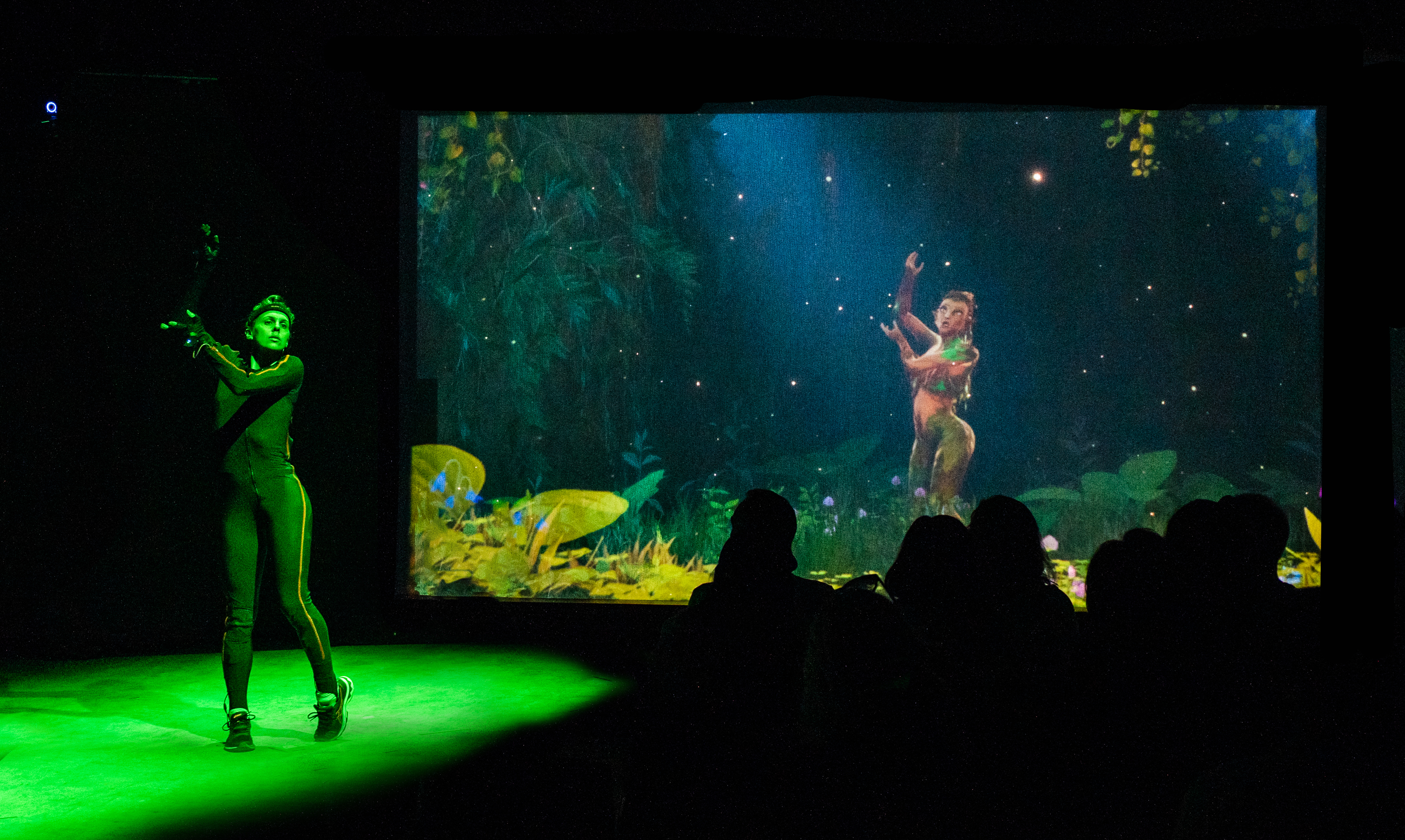
Live from the Underworld II: Eurydice’s Calling
The second event on the inaugural night was a live demonstration of music, dance and motion-capture technology fusing together to create a futuristic genre-defying experience. “We use emerging technology as a blank canvas to drive new ways of problem solving and engaging with the world,” said Stephanie Wong. “We create immersive and interdisciplinary artistic experiences because colonialism, patriarchy, and other social issues we are aiming to deconstruct are complex and require a multitude of ideas and perspectives.”
The hybrid performance entailed two dancers with Xsens motion-tracking sensors and a troupe of musicians performing hip-hop and operatic verses live on stage. An iPhone depth sensor camera captured the facial expressions of the singers. With the aid of a software called Reallusion, a group of video game professionals meticulously translated the facial expressions and body movements coming from different sources onto graphical avatars. The composite animations were projected onto a large screen replete with fantastical elements that transported the audience to a mythical world. The resulting effect was mind-blowing. Artistic talent and technological ingenuity were fusing to create an extended reality – one that blended material and virtual realities to create a magical realm. We live in times where tech platforms and devices aim to immerse human minds in mind-numbingly addictive virtual worlds that are cut off from reality. However, this experience exposed the audience to all the invisible labor, talent and co-ordination that typically goes into creating such immersive worlds.
The last few years with a pandemic have been very disruptive to the arts community. The onslaught of streaming platforms and overload of online content has deceived many into believing that there is not much scope for live performance arts. But young teams of engineers, 3-D artists, lyricists, singers and dancers are coming together to redefine a new future for visual and performing arts. They are at the forefront of envisioning new forms of storytelling. The team at re:Naissance Opera is committed to making these tools available to many more emerging indie artists. It is very exciting to think about all the possibilities that will arise from such endeavours.
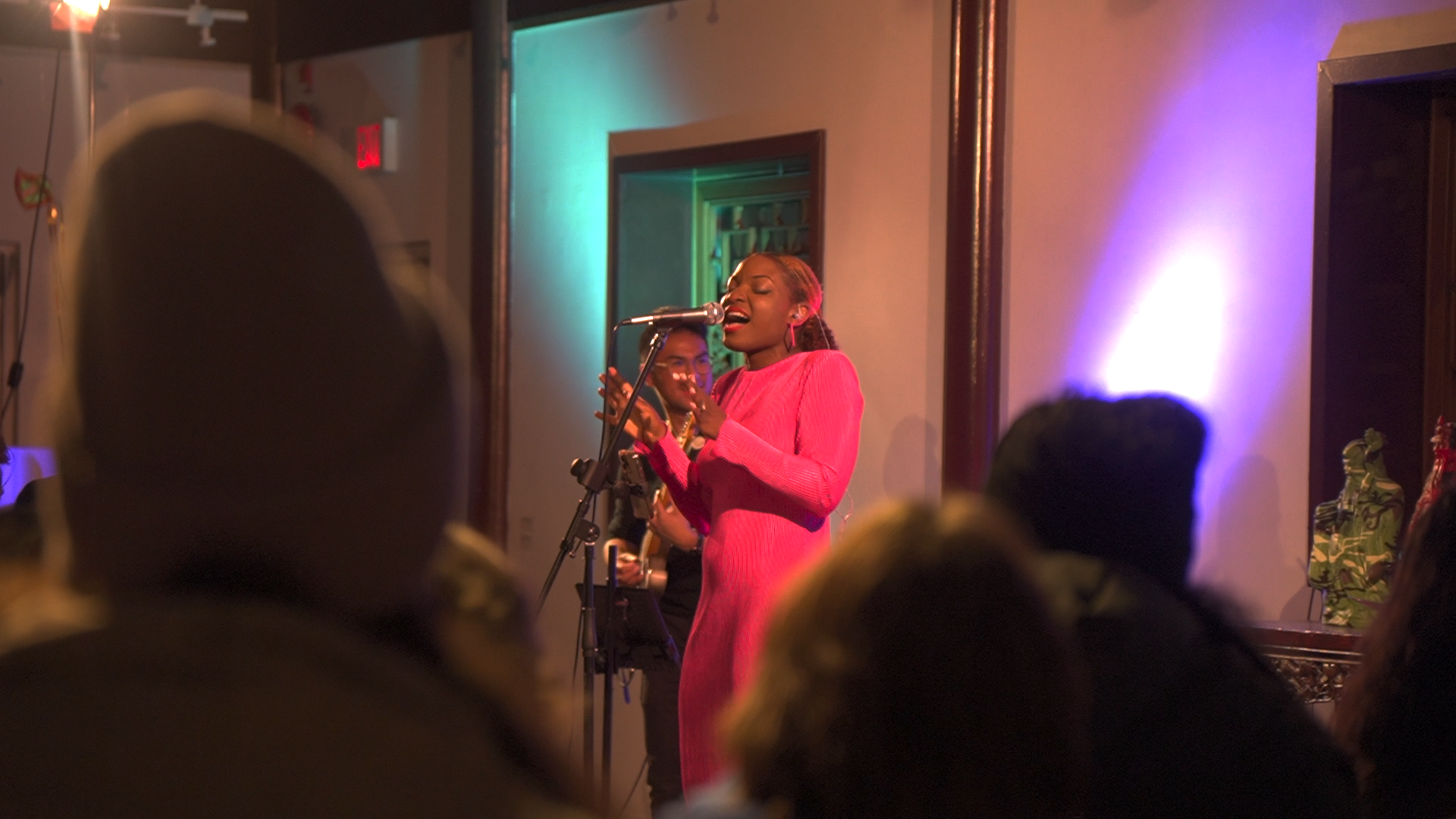
Imaginarium Series
Indiefest platformed emerging artists from myriad artistic genres via the Imaginarium Concert Series. The series was curated by four new BIPOC curators. Imaginarium I: The Liminal was curated by Hong-Kong born multidisciplinary artist Stephanie Wong. Kalsey Kanatan Wavey, a member of Tatasweyak Cree Nation curated Imaginarium II – an evening of groovy dance beats and burlesque that centered and celebrated local queer talent. The third event in the series, Imaginarium III was all about enjoying Indigenous music and savoring native flavors from the land and sea. This event was curated by dancer, singer and composer Raven Grenier. The final event in this series featured vocal chamber music by nine BIPOC composers, curated by the musical polymath Rich Coburn.
We got to attend the first event – The Liminal at the Dr. Sun Yat Sen Classical Chinese Garden. The garden is located in the historic Chinatown district of Vancouver. It is flanked by a scenic courtyard and Chinese cultural center in the front, the Sun Yat Sen Park to its side and a public playground at the back. The garden is a unique structure, built to resemble a scholar’s house from China’s legendary Ming dynasty. The structure is very thoughtfully designed to encourage deep contemplation and philosophical reverie. The amorphous indoor and outdoor spaces truly embody the liminal space between our inner and outer worlds, spirit and body. There couldn’t have been a better venue for this beautiful evening of contemplative art, nourishing food and soulful music.
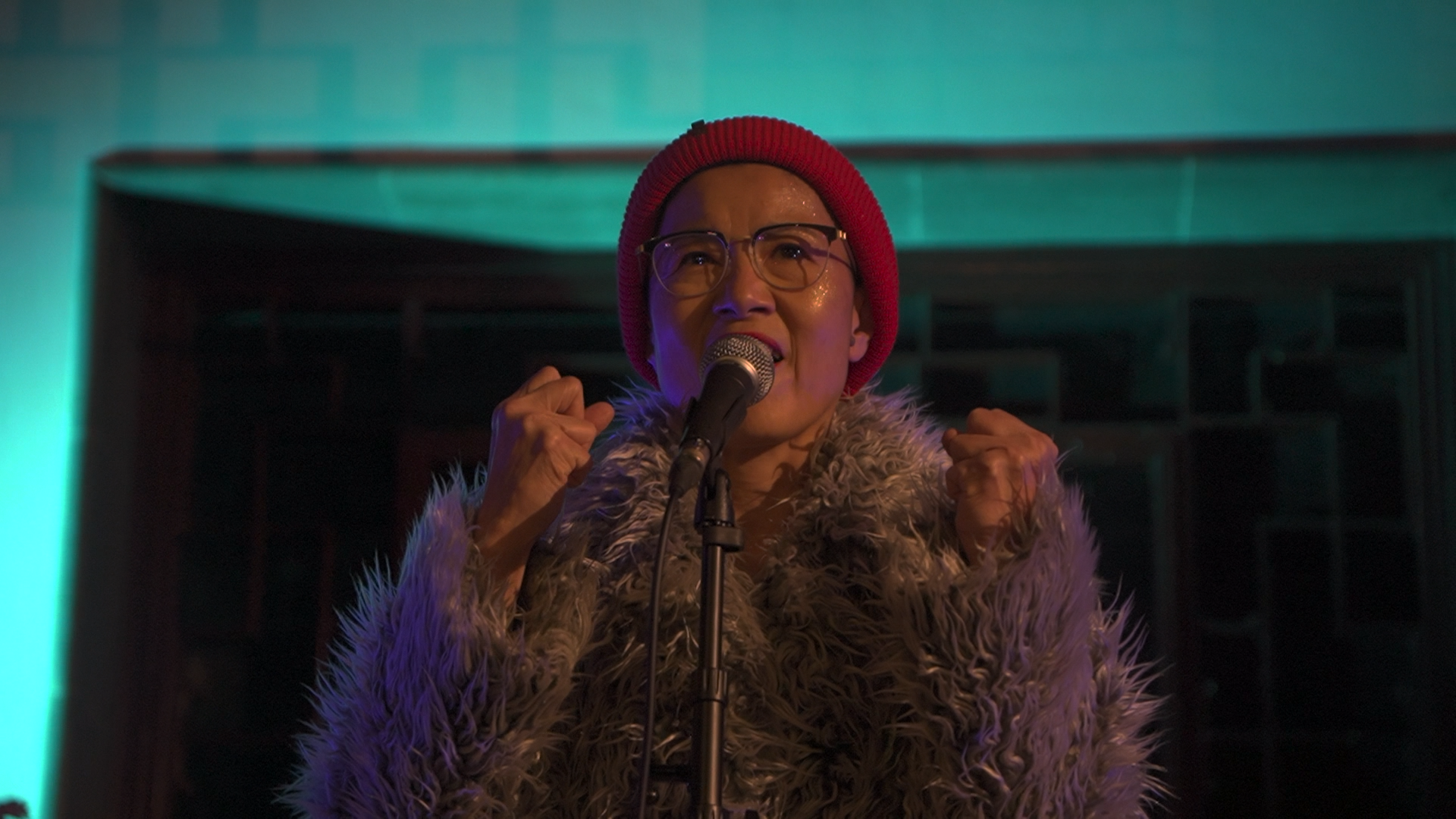
Curated by Stephanie Wong, The Liminal was a one of a kind experience. On a chilly evening, we were welcomed into the Chinese Garden with warm smiles, food tokens, a program pamphlet and hand warmers. The post-sunset ambience was intentionally curated to invoke contemplation about past histories and emergent changes in our world. We were encouraged to follow our impulses as we roamed the garden and chose our own adventures. Micro-performances were scattered in quaint rooms – contemporary dance to inspire embodied meditations, musical performances featuring drums and the wonderfully resonant Guzheng, topped up with a sensual poetry session by Lee Su-Feh who serenaded the audience by invoking pleasure – Touch me, Hold me, Let Me Go… An algorithm to reconnect with one’s body, loved ones, the planet and most importantly, our imaginations.
The garden housed a multiplicity of ecosystems that night. The dark and chilly nooks, the softly lit and breezy courtyard, the Jade Pavilion overlooking the plants and water – equipped with polaroid cameras and notepads to capture our imaginations as offerings to others…. And then there was the brightly lit and comfortably roomy, heated space for refreshments, conversations and forming connections. This space also hosted the final event of the evening – a soulful concert by the amazingly talented Sade Awele and her multi-cultural band. Sade’s soulful voice and the accompanying Afrobeats captured everyone in trance-like wonder. A universal feeling of inter-connection and transcultural solidarity was palpable in the shared space.
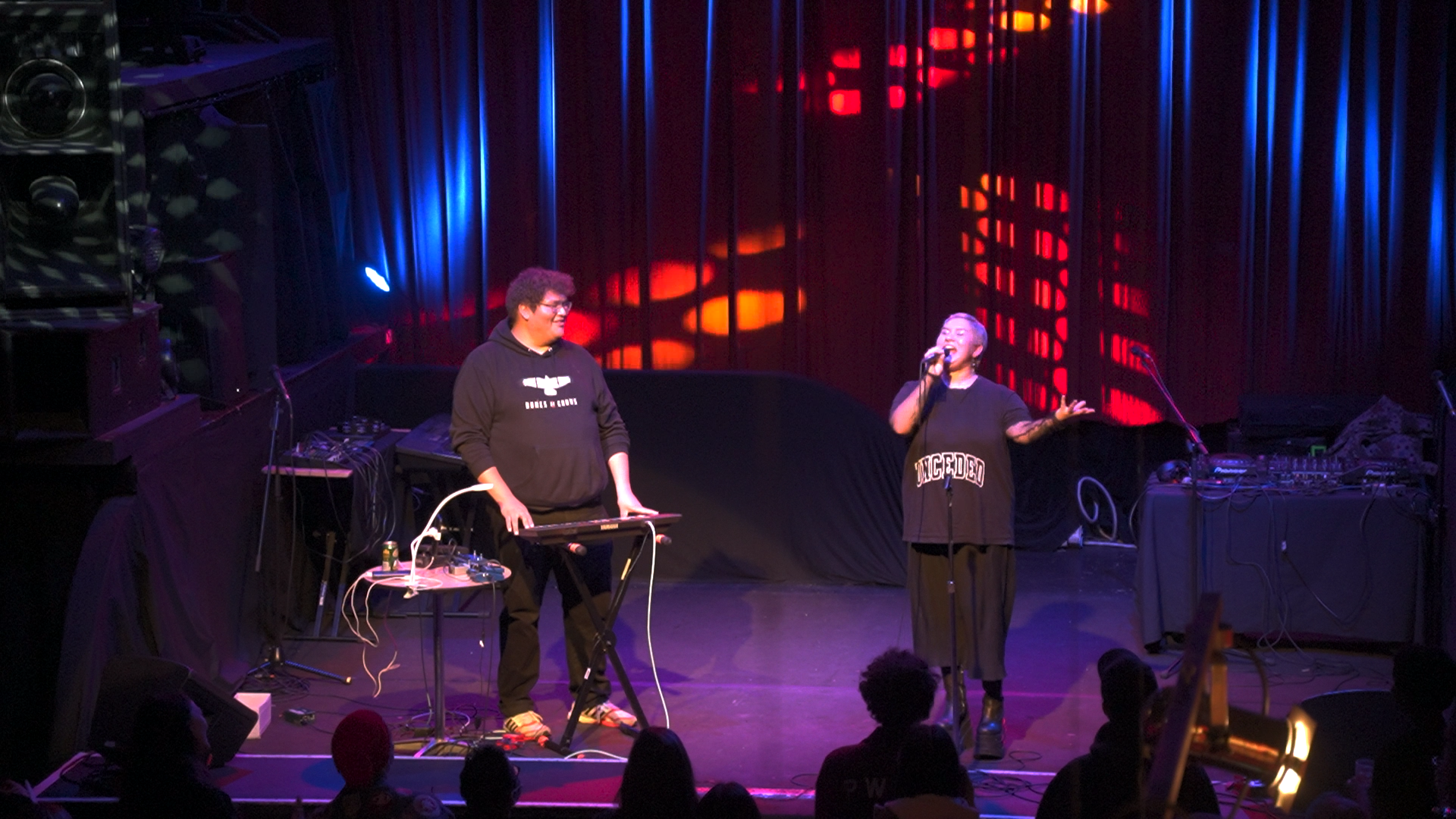
The historic venue allowed for everyone to contemplate on all the histories and cultural heritage that immigrants bring along with them when they recreate home in Canada. Vancouver’s Chinatown area was established primarily for and by immigrants in the 19th century. Since then, the neighborhood has seen many changes – today it houses many marginalized populations who struggle with systemic neglect, gentrification and houselessness. When deprived communities face threats of systemic violence and cultural erasure, liminal spaces like these which trigger contemplation, center art based activism and enable engagement with the wider community are the need of the hour.
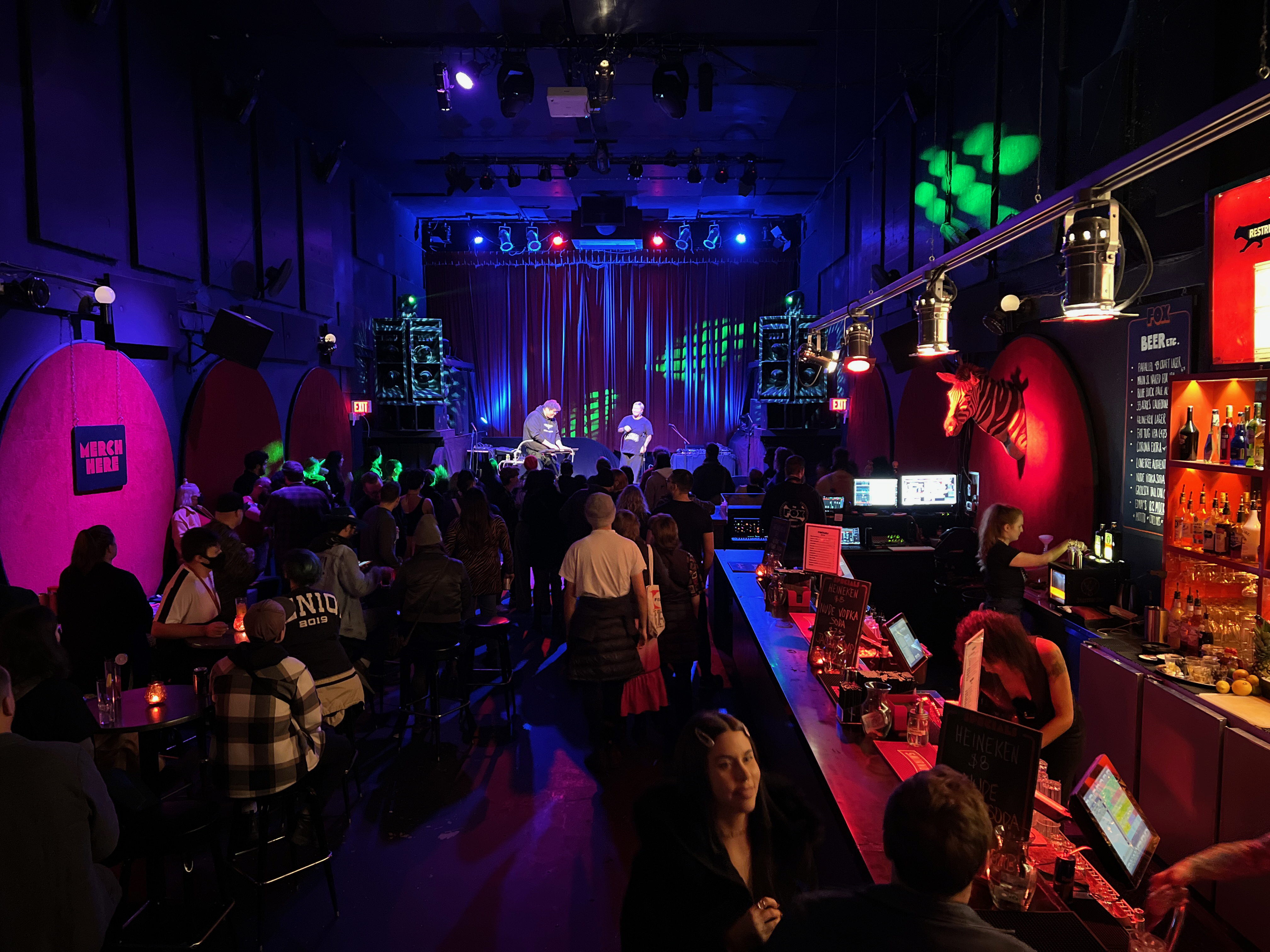
Closing Remarks:
The events at Indiefest 2022 were free to attend for self-identified Indigenous and 2SLGBTQ+ community folks. The rest of the tickets were sold in three tiers – enabling everyone to pay as per their means. Given the transformative and soul-stirring nature of performances that were showcased, it was a brilliant move to make the events accessible for everyone. Vancouver needs more such diverse and inclusive spaces that celebrate being human by welcoming all the unique individual expressions that make us whole. As Vancouver slowly emerges from the pandemic-caused closures and shut-downs, youth-led art festivals such as Indiefest are curating thoughtful, culturally rooted spaces for new expressions and art forms that hold space for progressive values and center oppressed voices and stories.
– Annapoorna Shruthi
